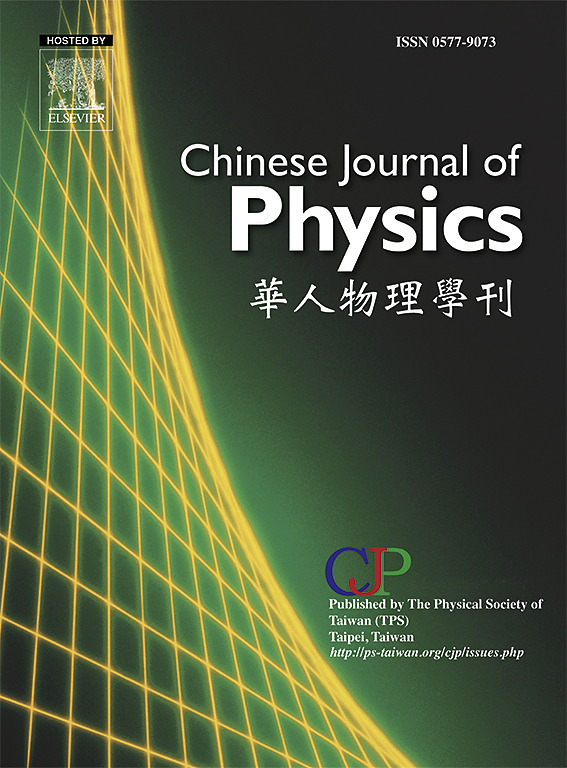Turning the magnetically dependent topological phase with electron correlation
IF 4.6
2区 物理与天体物理
Q1 PHYSICS, MULTIDISCIPLINARY
引用次数: 0
Abstract
In materials with unique structures and localized orbital distributions, electron correlation effects play a crucial role in determining their electronic properties. In the present work, we investigate the FeBrF monolayer through the Hubbard+U method to elucidate the underlying mechanisms linking electron correlation effects with magnetization-dependent topological phase transitions. The study demonstrates that electron correlation effects can significantly influence the Berry curvature, thereby driving topological phase transitions. The topologically protected edge states demonstrate robustness against magnetization angular variations. Even when the magnetization direction is close to the in-plane orientation, dissipationless chiral edge states can still be observed in the system. Our work provides new insights for the design of next-generation low-power electronic devices.

求助全文
约1分钟内获得全文
求助全文
来源期刊

Chinese Journal of Physics
物理-物理:综合
CiteScore
8.50
自引率
10.00%
发文量
361
审稿时长
44 days
期刊介绍:
The Chinese Journal of Physics publishes important advances in various branches in physics, including statistical and biophysical physics, condensed matter physics, atomic/molecular physics, optics, particle physics and nuclear physics.
The editors welcome manuscripts on:
-General Physics: Statistical and Quantum Mechanics, etc.-
Gravitation and Astrophysics-
Elementary Particles and Fields-
Nuclear Physics-
Atomic, Molecular, and Optical Physics-
Quantum Information and Quantum Computation-
Fluid Dynamics, Nonlinear Dynamics, Chaos, and Complex Networks-
Plasma and Beam Physics-
Condensed Matter: Structure, etc.-
Condensed Matter: Electronic Properties, etc.-
Polymer, Soft Matter, Biological, and Interdisciplinary Physics.
CJP publishes regular research papers, feature articles and review papers.
 求助内容:
求助内容: 应助结果提醒方式:
应助结果提醒方式:


